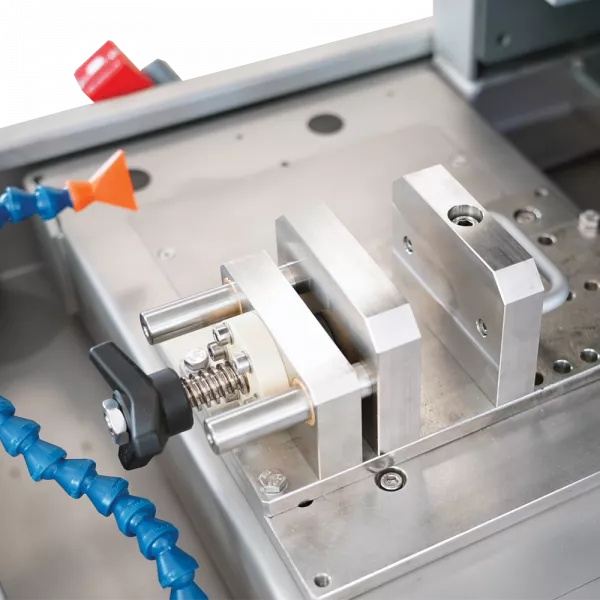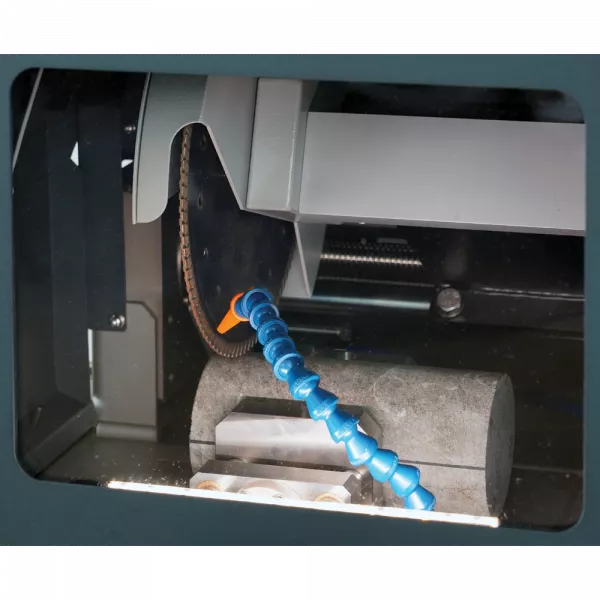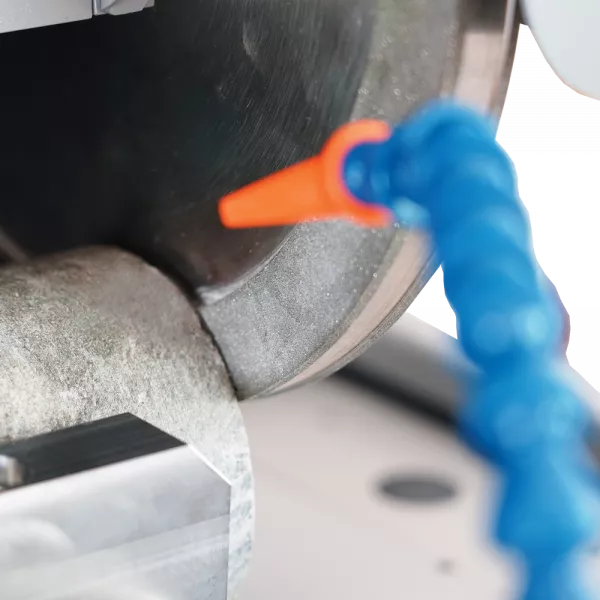The laboratory Core Trimmer machine is used for the preparation of rock specimens for strength and deformation testing from block samples or from drill core obtained in the field.
How to prepare the rock core specimen
The laboratory Core trimmer machine allows you to prepare a rock core specimen according to the following procedure:
1. Specimen Cutting: Core sample rock is clamped in the jig for holding and feeding during the cutting process. During the cutting phase, water is continuously recirculated for blade cooling and flush cuttings. The precise manual feeding system moves the blade horizontally. Once the specimen is cut, back off the blade and turn off the saw. Unclamp the specimen, reposition and repeat the procedure on the opposite side.
2. Grinding: In order to reach the flatness and parallelism tolerances, a grinding phase is usually required. The rock core specimen is again clamped with the holding jig and is ground using the diamond impregnated grinding wheel mounted on the opposite side of the machine. The specimen ends are typically colored with a waterproof marker, prior to the start of grinding, in order to monitor where material is being removed. Grind each end one at a time. In this phase, the cooling water system is used to cool the specimen and grinding wheel.






